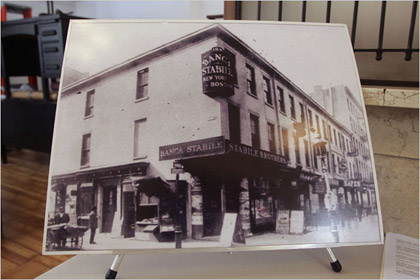Little Italy’s Italian American Museum Seeks Developer, New Home
By Al Barbarino April 16, 2013 7:30 am
reprintsThe board of the Italian American Museum is searching for a developer to build it a new home at Mulberry and Grand Streets in Little Italy, The New York Times reported yesterday.
The decision to sell the property comes after years of financial struggle, with deficits every year since 2008, when current ownership purchased the building. The museum’s operators believe the sale could yield up to $12 million.
“Unfortunately, I don’t see another way to do it,” the president and director of the museum, Dr. Joseph Scelsa, told the Times.
The museum features 3,000 artifacts – mostly donated from the attics, basements and closets of local Italian-Americans – and hosts lectures and poetry readings. But its 1,000 square feet are no longer sufficient for the 80,000 visitors it attracts per year, Dr. Scelsa said.

The museum’s financial difficulties trace back to dispute with a restaurant, according to Mr. Scelsa, who told the Times that he and a group of others who fitted the bill to buy the old bank, built in 1885, are also under agreement to fit the bill for the museum’s current $6.5 million mortgage.
To curb the financial woes, Dr. Scelsa and the 10 other board members plan to find a developer who is also willing to give the museum rent-free space after the sale and completion of the new structure.
The winning bidder will be asked to preserve certain aspects of the original building, formerly known as Banca Stabile, which lent immigrant Italians the money they needed for steamship tickets to the United States. Under current zoning, the building could grow to six stories and triple in size.
“The market has turned around, and we feel that, by partnering with a developer, we can accomplish more of our goals,” Mr. Scelsa said.
The museum’s artifacts include 32 Sicilian puppets; Italian lire printed in New Jersey in 1943, when the United States occupied Italy; Frank Serpico’s handguns; and street vendor permits from the first San Gennaro feast.


